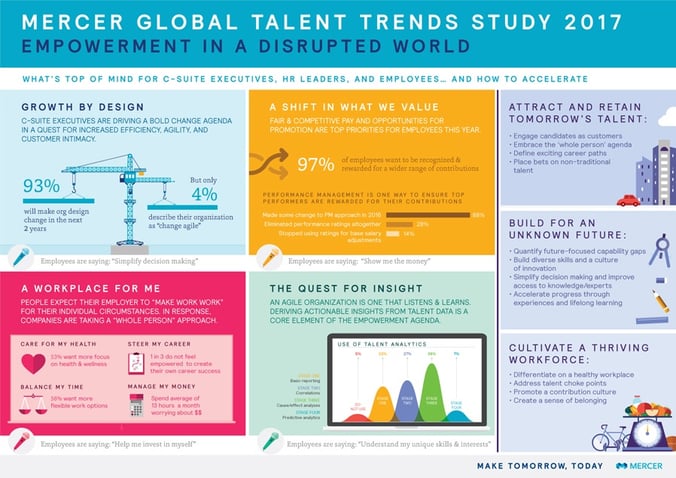Let Us Help You Engage Your Employees!
Onboard New Hires Safely, Efficiently, and Effectively.
Are You Interested in Improving Your HR Organization?
Retention is an often-overlooked part of hiring new developers. The necessity of keeping talent around is regularly overshadowed by the recruitment process itself. If retention is poor, employee turnover will grow — creating an inefficient loop of having to find new talent before you’ve finished filling the last position. A dangerous situation, in a field where skilled developers are more in-demand by the day.
In a business model, where a company operates by connecting businesses with experienced developers, retention is crucial, since loss of a software developer may largely influence one’s business goals.
A great way to understand the sheer necessity for quality retention, is to look at the exact challenges that many companies face when looking to hire software developers. At the moment, the market is rather competitive, with demand higher than supply for many technologies. Larger companies are prepared to pay high salaries if the required talent are experienced, giving developers a lot of leverage and choice. Start-ups are also appealing, as they offer interesting projects — recruiters can run into problems if their desired skillset is also in demand by more exciting opportunities.
All of this provides an environment where a developer can quite easily leave a project, without fear of looming unemployment. Globally, 97% of employees yearn for more recognition of their contributions, so it’s easy to see why many decide to switch jobs. (98% in the USA and 96% in Europe) Therefore, retention is key.
We’d also like to overlay this advice with one prerequisite: it’s incredibly important that you have a retention or happiness manager. Such a vital role should be dedicated to a single person, who is in charge solely of the happiness of talent. These strategies work best when managed by this role:
Without further ado, here are my top 3 tips to maintaining good retention:
Treat Your Developers like Clients
Your team is always your most important asset. Everything can fluctuate, but at the core, the people carrying out your projects are beyond vital. Developers should be given just as much value and respect as your prospective and existing clients. According to C-Suite executives, HR leaders and employees in the Mercer global talent trends study 2017, this was the most important step when attracting and retaining talent:

Great effort should be put into the process of focusing on your team after they are hired. Uncover their personalities, find out what they do outside of work, discover what aspects of their project they enjoy or dislike most... In the same manner that you would maintain with clients, you need to become a figure that developers can rely on. You need to listen directly to your developers, and then act in lieu of their comments — gaining their trust.
Gaining this trust is vital, as you will learn about potential difficulties quickly. The connection between you and the developer will enable problems to be discovered sooner, and in turn, fixed. This then creates an exponential development of trust, and therefore ever-increasing retention, if you genuinely fulfil solutions to employee issues.
These issues you should look out for include: a dislike of the current task/project; unsatisfactory salary; client/upper management miscommunication; low faith in coworkers; lack of growth/advancement opportunities; issues with work-life balance; stress from overwork; not enough feedback. They can be avoided in a similar way — by getting to know the people involved, and helping them as soon as needed.
Get Your Team Talking
Before your new hires officially enter the company, you must fulfil some preliminary groundwork for them to be retained efficiently.
Your company’s patterns of communication are vital, as new talent will adopt them quickly upon starting work. Sure, there behaviour will be partially determined by who they simply are as a person — but the first impressions and channels they are provided will have a huge impact on their initial happiness (and therefore their lasting happiness).
The key is to have a productive pattern of behaviour built into the very fabric of the company — a pattern that a new employee will naturally be exposed to from the get-go. In a digital workspace, it’s difficult to replicate the water cooler phenomena. Within traditional brick-and-mortar offices, talent gather around the water coolers — a seemingly unimportant occurrence, it has actually been proven to be a great factor in efficiency and happiness. When employees talk about things unrelated from work, they learn more about each other, receive a boost in morale, and so on. Companies cannot afford to misjudge the vast importance of social interaction, yet often supply weak structures for this to take place.
Instead, think outside of the box. If you carry out the advice in step 1 well, you should begin to learn if your team all share qualities — for example, if they all enjoy gaming, set-up a digital Steam group, or an in-person board games club. These employees will then set up their own chats, groups, etc — effective ones, that aren’t a corporate implementation, but instead a natural pattern that new hires will fall into.
All of this helps the company to perpetuate its own internal brand, but that is such an incredibly useful thing that it deserves a separate section:
Build an Internal Company Brand
If you maintain a positive company atmosphere, retention can begin to happen by itself. The more loyal your employees are, the easier it becomes for an effective company brand to form. If done correctly, your employees will become ambassadors and promoters for the company themselves, providing a welcoming landscape for new hires in their uneasy first days.
One good tactic for nurturing this brand is to keep your developers informed with regular updates. By providing them with your future goals, nearby plans and recent achievements, progress can be attributed to the team in a way which inspires recognition. They need to be a part of creating the brand — not just thrown under it. People will want to remain within something, that they have helped organically create.
Arranging consistent meetings and having regular correspondence is vital. Organise in-person announcements and newsletters in order to increase communication, as this provides a larger foundation for positive branding to take fold; from this, you’ll be able to gauge how the brand is developing.
Make sure to get upper management involved in these meetings, too. The CEO, business owners… Their important roles can positively influence the internal company brand. Via in-person meetings, or video calls when needed, talent should get to know the CEO on a personal level. If they find out about the upper management’s genuine values and principles, their viewpoint will become one of increasing loyalty. When a CEO goes to support the company football team, actively gives thoughts on LinkedIn/Facebook, or regularly attends staff events, many employees will see the philosophy of the CEO blend with the philosophy of the company.
You also need to understand, that retention cannot always stop an employee from leaving a company. This is not always a bad thing, however; if you have created an efficient company brand, they will hopefully be leaving with no ill feelings. They will be more likely to re-apply for new projects where they are needed again, whilst referring other developers to your company. This can aid new hiring, and the recruitment process.
Keep Reading
Workforce Management through Tech-Based Tools: Streamlining Construction and Roofing Operations
As industries evolve, adopting innovative approaches to workforce management is essential
Skills vs Abilities in the Workplace
Modern-day workplaces are facing many challenges that were not foreseeable a few years






